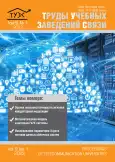Properties of Malicious Social Bots
- Authors: Kolomeets M.V.1, Chechulin A.A.1,2
-
Affiliations:
- Saint-Petersburg Federal Research Center of the Russian Academy of Sciences
- The Bonch-Bruevich Saint-Petersburg State University of Telecommunications
- Issue: Vol 9, No 1 (2023)
- Pages: 94-104
- Section: Articles
- URL: https://journals.rcsi.science/1813-324X/article/view/254359
- ID: 254359
Cite item
Full Text
Abstract
About the authors
M. V. Kolomeets
Saint-Petersburg Federal Research Center of the Russian Academy of Sciences
Email: kolomeec@comsec.spb.ru
ORCID iD: 0000-0002-7873-2733
A. A. Chechulin
Saint-Petersburg Federal Research Center of the Russian Academy of Sciences; The Bonch-Bruevich Saint-Petersburg State University of Telecommunications
Email: chechulin.aa@sut.ru
ORCID iD: 0000-0001-7056-6972
References
- Cresci S. A decade of social bot detection // Communications of the ACM. 2020. Vol. 63. Iss. 10. PP. 72–83. doi: 10.1145/3409116
- Ferrara E., Varol O., Davis C., Menczer F., Flammini A. The rise of social bots // Communications of the ACM. 2016. Vol. 59. Iss. 7. PP. 96–104. doi: 10.1145/2818717
- Yang C., Harkreader R., Gu, G. Empirical Evaluation and New Design for Fighting Evolving Twitter Spammers // IEEE Transactions on Information Forensics and Security. 2013. Vol. 8. Iss. 8. PP. 1280–1293. doi: 10.1109/TIFS.2013.2267732
- Vitkova L. Kolomeec M., Chechulin A. Taxonomy and Bot Threats in Social Networks // Proceedings of the International Russian Automation Conference (RusAutoCon, Sochi, Russia, 04‒10 September 2022). IEEE, 2022. PP. 814‒819. doi: 10.1109/RusAutoCon54946.2022.9896268
- Orabi M., Mouheb D., Al Aghbari Z., Kamel I. Detection of Bots in Social Media: A Systematic Review // Information Processing & Management. 2020. Vol 57. Iss. 4. P. 102250. doi: 10.1016/j.ipm.2020.102250
- Varol O., Ferrara E., Davis C., Menczer F., Flammini A. Online Human-Bot Interactions: Detection, Estimation, and Characterization // Proceedings of the 11th International AAAI Conference on Web and Social Media. 2017. Vol. 11. Iss. 1. PP. 280‒289. doi: 10.1609/icwsm.v11i1.14871
- Stieglitz S., Brachten F., Berthel ́e D., Schlaus M., Venetopoulou C., Veutgen D. Do Social Bots (Still) Act Different to Humans? – Comparing Metrics of Social Bots with those of Humans // Proceedings of the 9th International Conference on Social Computing and Social Media. Human Behavior (SCSM 2017, Vancouver, Canada, 9‒14 July 2017). Lecture Notes in Computer Science. Vol. 10282. Cham: Springer, 2017. PP. 379–395. doi: 10.1007/978-3-319-58559-8_30
- Kolomeets M., Chechulin A. Analysis of the Malicious Bots Market // Proceedings of the 29th Conference of Open Innovations Association (FRUCT, Tampere, Finland, 12‒14 May 2021). IEEE, 2021. PP. 199–205. doi: 10.23919/FRUCT52173.2021.9435421
- Perdana R.S., Muliawati T.H., Alexandro R. Bot spammer detection in twitter using tweet similarity and time interval entropy // Jurnal Ilmu Komputer dan Informasi. 2015. Vol. 8. Iss. 1. PP. 19–25. doi: 10.21609/jiki.v8i1.280
- The Black Market for Social Media Manipulation. Riga: NATO StratCom COE, 2018.
- Chavoshi N., Hamooni H., Mueen A. DeBot: Twitter Bot Detection via Warped Correlation // Proceedings of the 16th International Conference on Data Mining (ICDM, Barcelona, Spain, 12‒15 December 2016). IEEE, 2016. PP. 817–822. doi: 10.1109/ICDM.2016.0096
- Dorri A., Abadi M., Dadfarnia M. SocialBotHunter: Botnet Detection in Twitter-Like Social Networking Services Using Semi-Supervised Collective Classification // Proceedings of the 16th International Conference on Dependable, Autonomic and Secure Computing, 16th International Conference on Pervasive Intelligence and Computing, 4th International Conference on Big Data Intelligence and Computing and Cyber Science and Technology Congress (DASC/PiCom/DataCom/CyberSciTech, Athens, Greece, 12‒15 August 2018). IEEE, 2018. PP. 496–503. doi: 10.1109/DASC/PiCom/DataCom/CyberSciTec.2018.00097
- Vitkova L., Kotenko I., Kolomeets M., Tushkanova O., Chechulin A. Hybrid Approach for Bots Detection in Social Networks Based on Topological, Textual and Statistical Features // Proceedings of the Fourth International Scientific Conference Intelligent Information Technologies for Industry (IITI’19, Ostrava – Prague, Czech Republic, 2–7 December 2019). Advances in Intelligent Systems and Computing. Vol. 1156. Cham: Springer, 2020. PP. 412‒421. doi: 10.1007/978-3-030-50097-9_42
- García-Orosa B., Gamallo P., Martín-Rodilla P., Martínez-Castaño R. Hybrid Intelligence Strategies for Identifying, Classifying and Analyzing Political Bots // Social Sciences. 2021. Vol. 10. Iss. 10. P. 357. doi: 10.3390/socsci10100357
- Yang K.C., Hui P.M., Menczer F. Bot Electioneering Volume: Visualizing Social Bot Activity During Elections // Companion Proceedings of The 2019 World Wide Web Conference (WWW '19, San Francisco, USA, 13‒17 May 2019). New York: Association for Computing Machinery, 2019. PP. 214–217. doi: 10.1145/3308560.3316499
- Adrian R., Kaiser J. The False positive problem of automatic bot detection in social science research // PLoS ONE. 2020. Vol. 15. Iss. 10. P. e0241045. doi: 10.1371/journal.pone.0241045
- Boneh D., Grotto A.J., McDaniel P., Papernot N. How Relevant is the Turing Test in the Age of Sophisbots? // IEEE Security & Privacy. 2019. Vol. 17. Iss. 6. PP. 64‒71. doi: 10.1109/MSEC.2019.2934193
- Aiello L.M., Barrat A., Schifanella R., Cattuto C., Markines B., Menczer F. Friendship prediction and homophily in social media // ACM Transactions on the Web. 2012. Vol. 6. Iss. 2. PP. 1‒33. doi: 10.1145/2180861.2180866
- Kolomeets M. Security Datasets – MKVK2021. URL: https://github.com/guardeec/datasets#mkvk2021 (дата обращения 28.02.2023)
- Branitskiy A., Levshun D., Krasilnikova N., Doynikova E., Kotenko I., Tishkov A., Vanchakova N., Chechulin A. Determination of Young Generation’s Sensitivity to the Destructive Stimuli based on the Information in Social Networks // Journal of Internet Services and Information Security. 2019. Vol. 9. Iss. 3. PP. 1‒20.
- Проноза А.А., Виткова Л.А., Чечулин А.А., Котенко И.В., Сахаров Д.В. Методика выявления каналов распространения информации в социальных сетях // Вестник Санкт-Петербургского университета. Прикладная математика. Информатика. Процессы управления. 2018. Т.14. № 4. С. 362‒377. doi: 10.21638/11702/spbu10.2018.409.
Supplementary files






